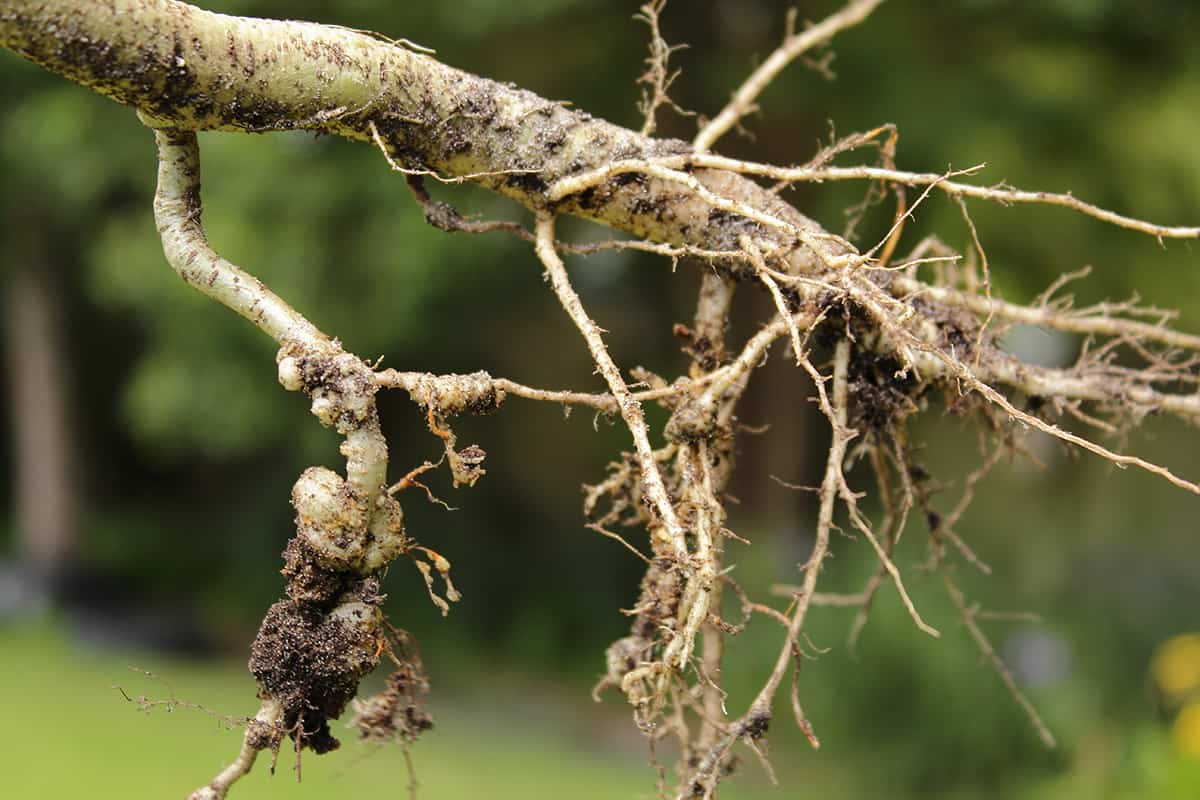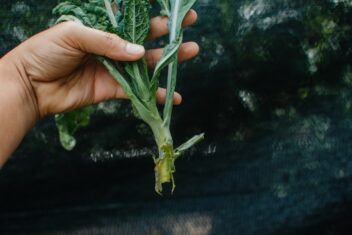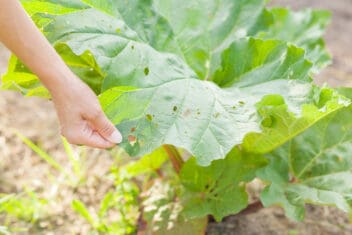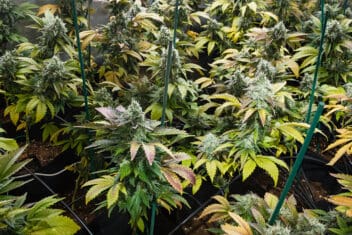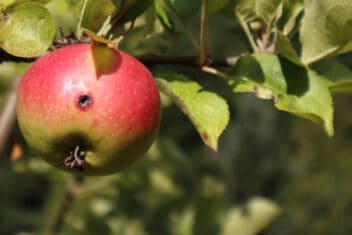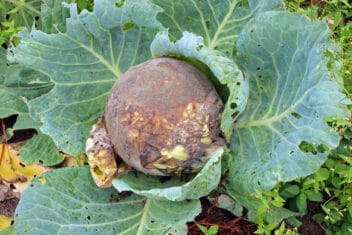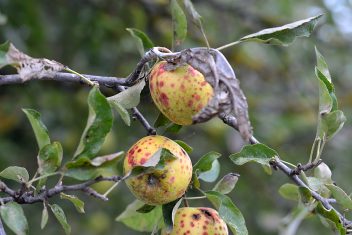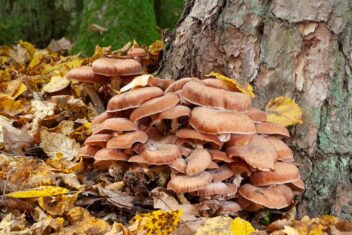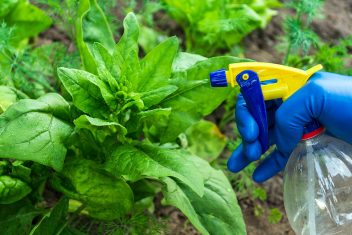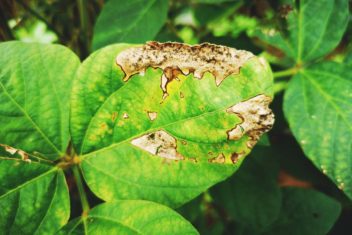When you think about how many pests and diseases can affect your food gardens, you could be forgiven for thinking it’s easier just to buy all your groceries and forget about gardening.
Crown and root gall are two those issues you hope you never get because they can kill your plants, and there’s no cure. Even a minor infection will make your plant struggle. Plus, it impacts ornamentals, too, so it makes your garden unsightly.
Read on so you can be armed and ready to prevent and deal with crown and root gall.
What is Crown and Root Gall
The bacteria that cause galls to form live in the soil and feed on plant tissue. The disease can last for years in the ground, waiting to strike when the conditions are right. Nematodes can also cause galls on plant roots.
Once the bacteria find a wound in the plant, they enter and start to spread. Various types of bacteria affect different plants, but they all cause galls to form.
The bacteria cause the plant cells to grow rapidly resulting in abnormal growth, which causes the galls.
These galls are somewhat like tumors on plants and are often also called “knots.” These are usually on the trunks, roots, and sometimes the branches. They can be small or large and are rough, woody clumps on the crown. On roots, they look more like little lumps or growths.
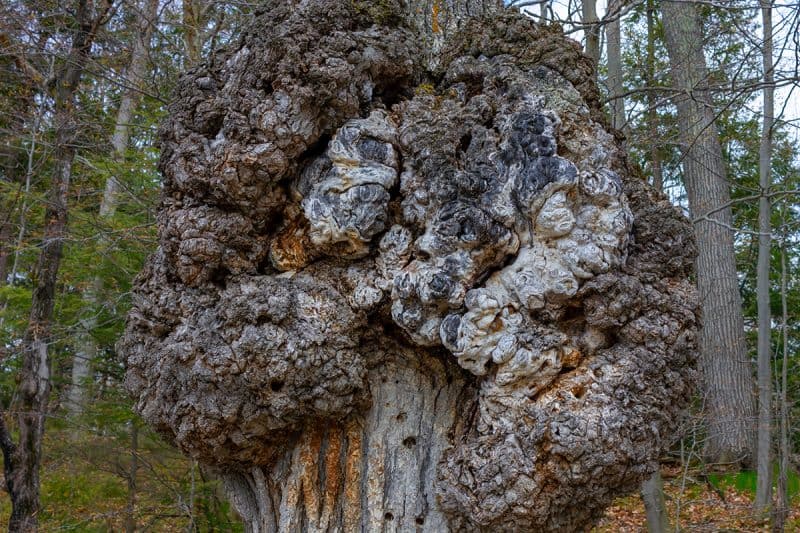
The galls can interrupt the flow of nutrients as the plant tries to move nutrients from the roots to the branches and foliage. This usually makes the plant lose vigor. In bad cases, the plant may die off. It’s especially bad if the gall covers the entire circumference of the stem, branch, or twig. Or, galls may completely take over the root system.
As the galls get older, they harden and are covered in cracks or fissures. On herbaceous plants, the galls often form and then rot away. On woody plants, the galls harden and don’t rot away.
How to Identify Crown and Root Gall
Once you learn how to spot crown galls, you generally won’t miss them again because they’re unique. Look for:
- Irregular tumors on stems. They can be small at 1/10th of an inch to a foot in diameter. Large trees have extremely big galls.
- New galls can be quite soft and spongy and harden over time. They may start smooth before becoming rough and uneven.
- Old galls are hard and darker than the tree or plant they are on. Their cracks and fissures seem to get worse over time.
- Galls often form on the stem where the plant goes into the soil but look over the whole plant.
- Sometimes you will see rows of multiple galls, depending on the plant and the particular bacteria causing the gall.
But how do you spot root galls, which form underground? Because galls strangle the plant by preventing nutrients from flowing, you’ll often see issues aboveground. On top of that, the cracks in the galls allow other bacteria and diseases to enter the plant
If things get terrible, don’t be afraid to dig down and lift the roots to examine them.
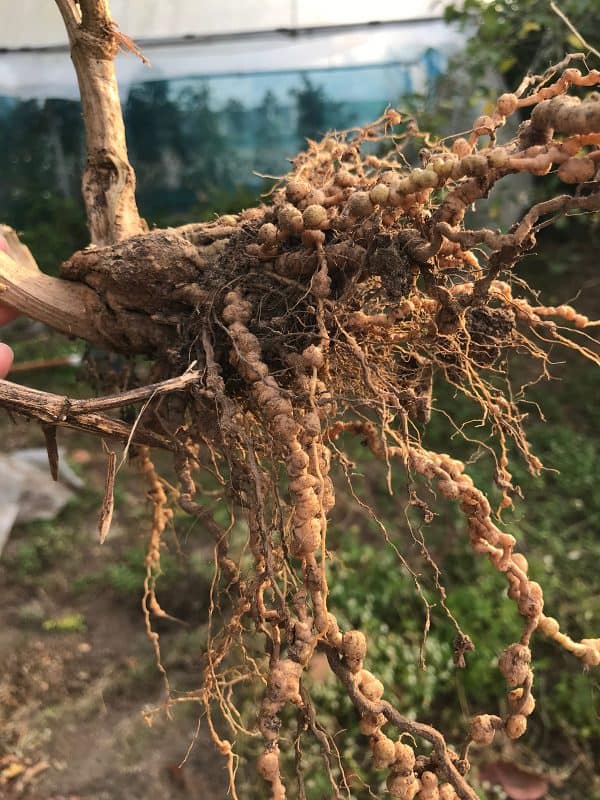
Here is what to watch for above ground:
- The leaves yellow and fall off the plant prematurely.
- Loss of vigor
- Lack of fruit, flowers, or buds
- A weakened plant
- Distorted leaves and stems
How Crown and Root Gall Spreads
Crown and root gall bacteria enter the plant through wounds and damage on the roots, trunk, stem, or bark. It’s important to be careful to avoid damaging the plant when planting or maintaining plants.
Pruning can also be an issue, especially if you use blunt secateurs or clippers. If you tear or rip the plant, the wound site is much bigger than if you use sharp tools.
Plants can be damaged by freezing conditions or insects. You may even find the damage allowing the bacteria to enter originated from the grafting at the nursery, or the plant arrived with the issue. Trimmers can also damage the trunk of trees.
The roots of the plant can cause the bacteria to be spread through the soil, or you can spread it by moving infected soil around.
Cells of the plant that have just been wounded are prone to infection for a number of days if the plant is in its growing season. If the plant is in the dormant season, the wound site will stay susceptible to infection for weeks or months.
Plants That Get Crown and Root Gall
Crown and root gall affect many plants that are woody or herbaceous.
Fruit Trees
- Apple
- Currents
- Cherries
- Gooseberries
- Grapes
- Quince
- Plums
- Peaches
- Pears
Vegetables
- Zucchini
- Rutabaga
- Beets
- Runner beans
There are about 600 different plants that can be affected by crown and root gall, including many landscape trees and shrubs like roses.
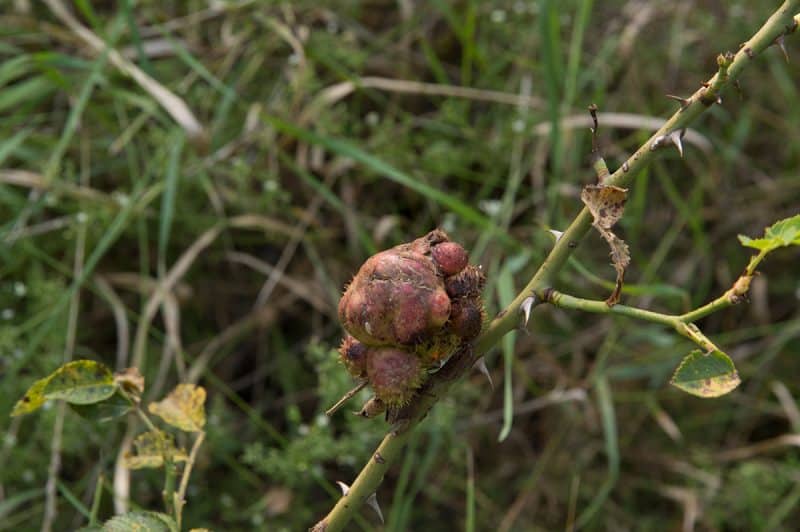
Ways to Prevent Crown and Root Gall
When you plant new plants, make sure you check the root system. If you see galls on the root system, don’t plant it. Be particularly careful with fruit trees. Take them back if you bought them, or destroy them to avoid introducing the bacteria to your soil.
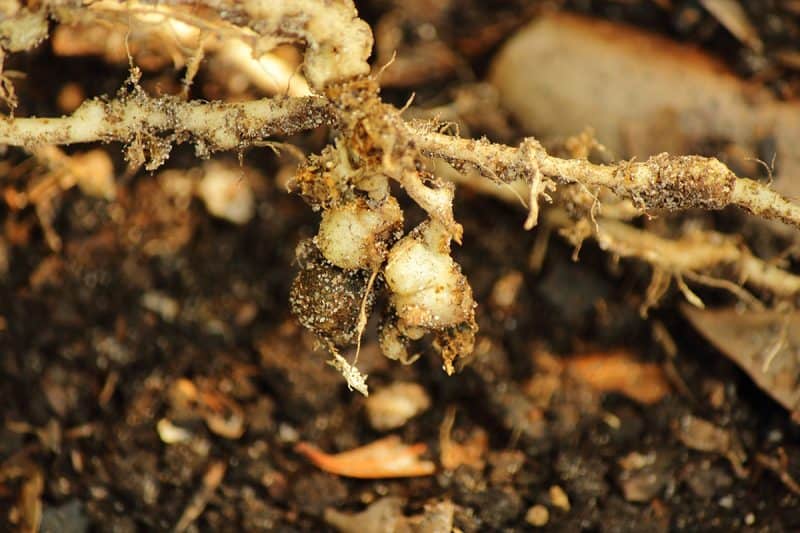
There are some chemical preventatives that you can soak the roots in first. These chemicals are specific to crown and root gall. Talk to your local professional about what is available in your area.
For instance, a bacterium called Agrobacterium radiobacter strain 84 is available in some states. It’s a pre-planting treatment used for dipping before putting the plant in the soil.
The soil can be either inviting or uninviting to the bacteria, so there are some things you can do. Make these a part of your garden routine.
- Don’t over-lime your soil. Slightly acidic soil is better, so if your plants can handle it, aim for a pH below 7.0. Grow plants that prefer an acidic environment, especially if you have had crown or root gall issues in the past.
- Avoid crowding or foliage overgrowth, especially at the end of the season. One way to avoid this is by not feeding too late in the season.
- Practice good crop rotation.
- Talk to your local expert to identify those varieties that aren’t affected by crown and root gall.
- When you prune, be careful the pruning wound doesn’t touch the soil.
- Be careful not to damage your plants with a string trimmer. Use a guard so as not to create new wound sites.
- If you suspect crown and root gall, or any other issue, don’t replant from that area into another.
- Don’t transport soil from one garden to another unless you are absolutely certain the soil is healthy.
- Given that gall bacteria spread quickly among susceptible plants, consider interspersing resistant plants in your garden.
Some resistant trees include:
- Cedar
- Spruce
- Beech
- Holly
- Pine
- Hemlock
- Douglas Fir
What to do if you Find Crown and Root Gall
There’s no denying it’s a problem if you find crown or root gall on your plants, but it’s not the end of the world. Here’s what to do:
- Consider how important the plant with crown and root gall is. Is it a plant you can pull out and destroy? That’s the easiest thing to do. Don’t put the plant in the compost heap. Either burn it or bag it and dispose of it.
- Prune out the infected parts. If the infection isn’t bad or in its very early stages, prune it out. Once again, destroy by burning if you can.
- Sterilize the soil by natural methods like solarization. Read our article on various ways to sterilize your soil to keep it healthy.
- Some gardeners cut the galls off with a sharp knife. Seal the wound with a pruning sealer. Burn the removed wood. This is only practical if the gall is a manageable size.
Leaf Galls Are Treated Differently
A word on leaf gall: Large lumps on leaves are an unsightly problem, but not as serious as crown and root gall. Leaf gall is usually the result of insect damage.
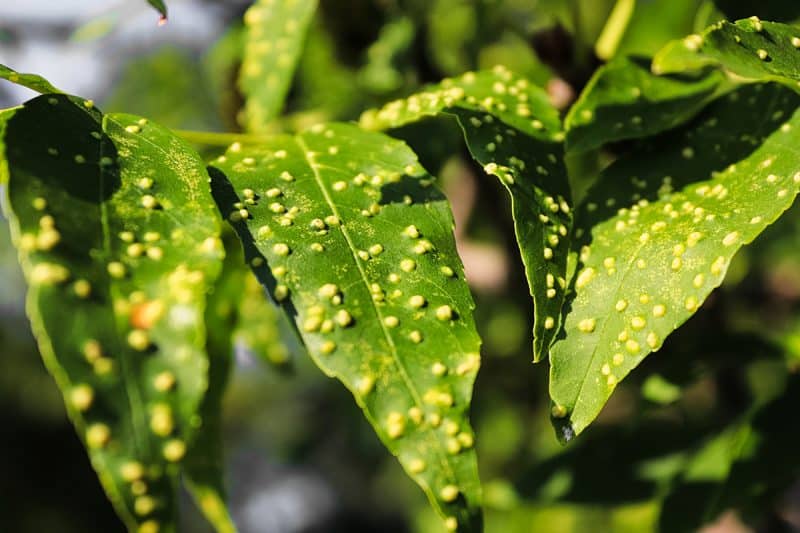
Treat for insect pests as per your normal routine at the beginning of the season or spray through the dormant season.
